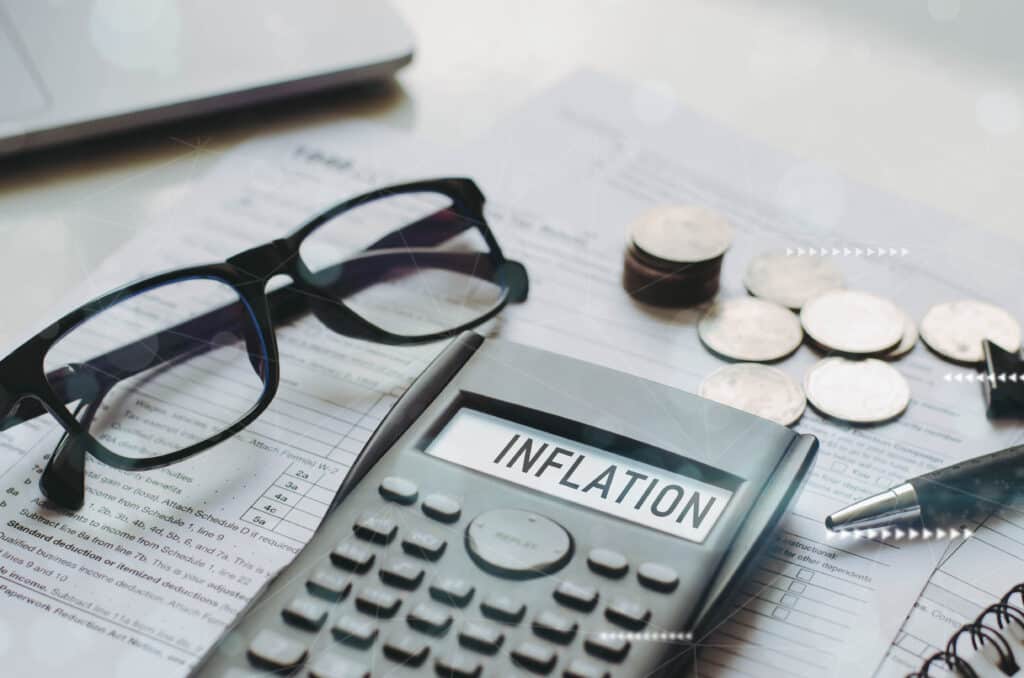By now, you’re no stranger to the impact rising interest rates have had on the economy. Over the last year, interest rates have risen to the tune of 5-5.25%. 1 When these hikes happen, the goal is most always to slow down the economy in order to turn inflation on its head. But in order to do that, things may have to get a little uncomfortable first.
Strengthening Your Financial Foundation In An Uncertain Economy
This latest bump in interest rates by the Federal Reserve landed at 0.25 of a percentage point. So, what does this mean and should you be concerned? Well, let’s zoom out to gain a clearer vantage point. The average interest rate in the US since 1971 is 5.42%, with the highest rate being 20% in 1980. 2 Whether the Feds continue to raise interest rates throughout this year or not, these are not uncharted territories. Still, as financial advisors, we understand that fear can be a natural response to these changes. That’s why we are here to guide you every step of the way.
If you don’t yet have a financial advisor on your team, you can schedule a call with an advisor today! It’s time to get your finances in a healthy spot so you can weather the storms.
Here’s a few things you can consider now to strengthen your financial foundation:
1. Stay the course (on your investments).
When it comes to investing, you don’t want to get so scared that you pull all your investments out of the market. Stock prices are going to go up and down based on these major moves from the Federal Reserve (and how well the economy is doing). It’s not the best time to make big decisions about your investments if it’s in response to fear. If you’re nervous, reach out to your financial advisor. They can help talk you through your fears and be a great sounding board as you think through your investment strategy.
2. Press pause on making big purchases.
Now isn’t the best time to make big financial purchases, or even big financial moves for that matter. If you’re thinking about buying a new car, for example, now may not be the best time, unless you absolutely need one. And if you’re thinking about taking out a loan for a large purchase, you may want to consider postponing if possible. If you can’t get around it, make sure to shop around for the best rates.
3. Pad your savings account.
Let’s face it: things just cost more right now. When the rates go up, they can have a trickle-down effect and we’re seeing that in our cost of living with higher mortgage rates, credit card interest, and even grocery prices. The best way to strengthen your financial foundation is by steadily increasing your emergency fund. There’s no promise that jobs will stay steady or that there won’t be another interest rate hike in the future. You can combat that by increasing your savings. That way, if job loss or cost of living hits you hard, you can have something to fall back on. You’ll be glad you did!
4. Pay off debt.
According to Bankrate, the national annual percentage rates on credit cards surpassed 20%.2 If you have a credit card balance, it’s time to pay it off as soon as possible. And the same goes for any other outstanding debt. Remember, the best way to stay financially solid is by making sure you’re keeping your money where it belongs: your bank account. Using debt payoff methods like the debt snowball or the debt avalanche will be beneficial to you during this time.
We understand that news about yet another interest rate hike doesn’t sit well. But that doesn’t mean you have to stop the forward progress you’re making with your money. Stay the course and reach out to a financial advisor to come up with the best plan for your money. Not only will you be inviting a calming and knowledgeable voice to join your financial team, you’ll also gain peace of mind knowing that you’re on the right track.
Reach out to a SageSpring Wealth Partner and create a solid financial plan today. No matter the financial climate, we are here for you every step of the way.
Any opinions are those of SageSpring and not necessarily those of Raymond James. This information is intended to be educational and is not tailored to the investment needs of any specific investor. The information contained in this report does not purport to be a complete description of the securities, markets, or developments referred to in this material. The information has been obtained from sources considered to be reliable, but we do not guarantee that the foregoing material is accurate or complete, it is not a statement of all available data necessary for making an investment decision, and it does not constitute a recommendation. Investing involves risk and you may incur a profit or loss regardless of strategy selected. Past performance is not indicative of future results.

